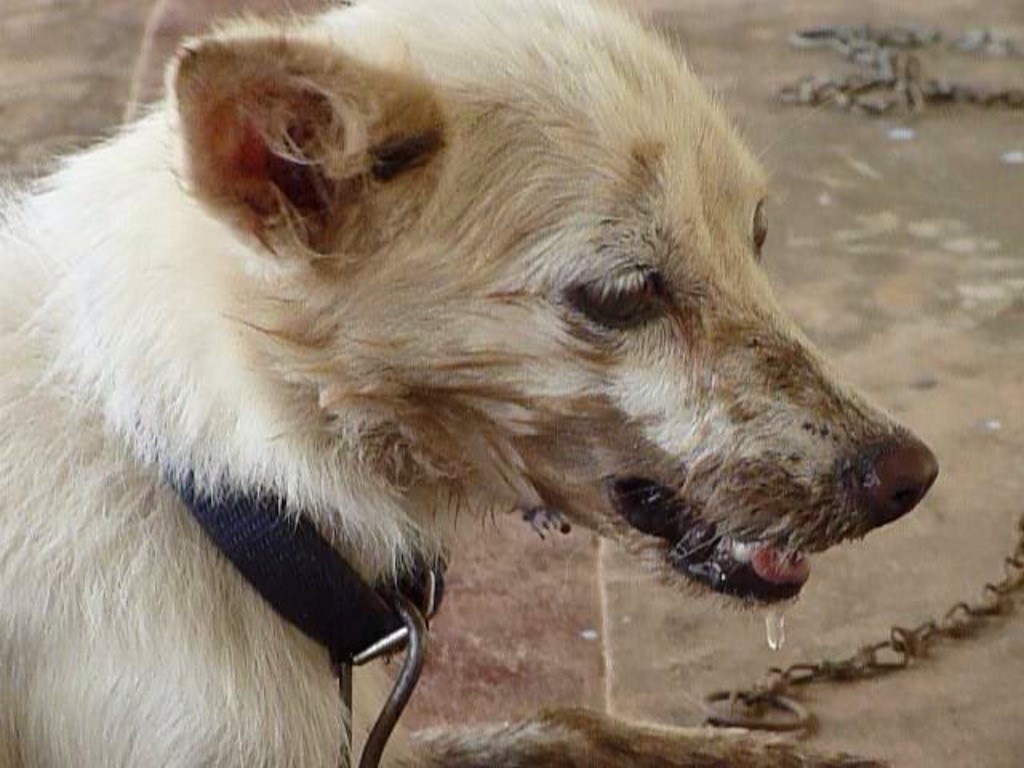What to look for
Erratic, strange animal behaviour, such as:
- drooling, attacking and biting people, animals or things for no reason, howling, twitching and running around blindly if ‘furious’ rabies
- wobbly gait or difficulty walking, paralysed or in a stupor if ‘dumb’ rabies.

Animals with rabies may drool excessively and will act strangely. Image courtesy of Michael Heath.
What you can do
- Do not move live animals out of the Torres Strait Protected Zone to the Torres Strait Permanent Biosecurity Monitoring Zone, or from either zone to mainland Australia without a permit and an inspection by a departmental biosecurity officer.
- Report any signs of unusual animal behaviour (either aggressive or lethargic) to the Emergency Animal Disease Hotline on 1800 675 888.

Live animals need a permit to move south between zones and to mainland Australia.
Profile
Rabies is a serious viral disease that affects the central nervous system of warm blooded mammals, including humans. Rabies virus is transmitted by contamination of a fresh wound with infected saliva, usually by the bite of a rabid animal. It is almost always fatal once clinical signs have appeared. More than 55 000 people die of rabies every year, mostly in Asia and Africa. More than 15 million people receive post-exposure treatments each year after being exposed to rabies-suspect animals.
Identification
Animals infected with rabies may not show any signs of illness for the first few weeks or months, but eventually they will become sick. Foaming or drooling at the mouth and erratic, aggressive behaviour are two common signs of ‘furious’ rabies where animals may attack stationary objects, people or other animals or gnaw their own limbs. Animals with ‘dumb’ rabies may retreat to isolated places and exhibit signs of paralysis including drooping head, paralysed hind limbs and a sagging jaw.
Distribution
Rabies is present in most of the world except countries including Australia, Japan, Singapore, New Zealand, United Kingdom, Ireland and Papua New Guinea. Rabies is present in parts of Indonesia with spread to some of the more eastern islands of Indonesia occurring within the last decade. The island of Timor is free of rabies.
Threat
Australia does not have endemic classical rabies (a closely related virus, Australian bat lyssavirus, is present in bats in Australia), however, there is concern that if it becomes established in New Guinea it could cross to Australia through movement of infected dogs. If this occurs, rabies could become established in dingoes, wild dogs and their hybrids, putting humans and other animals at risk.
Keep a Top Watch!
- It is important to take precautions when dealing with any wild or unfamiliar domestic animal. Call the Emergency Animal Disease Hotline on 1800 675 888 if any animals are displaying signs of rabies. In case of humans being bitten by animals that are suspected of having rabies, immediate attempts should be made to identify the animal involved, thoroughly flush and wash the bite wound and seek urgent medical assistance.
For further information or advice contact NAQS.
